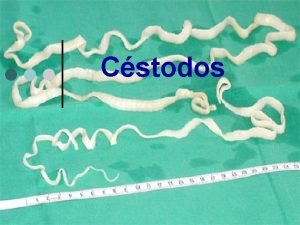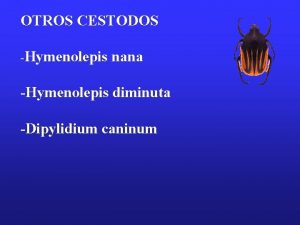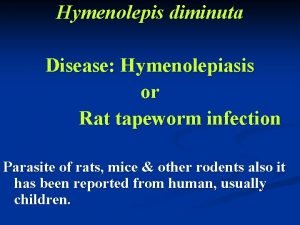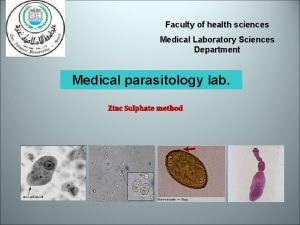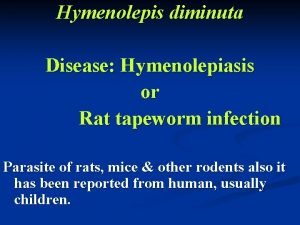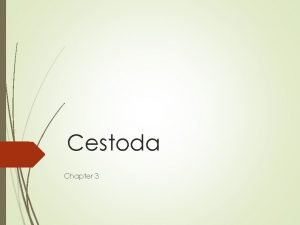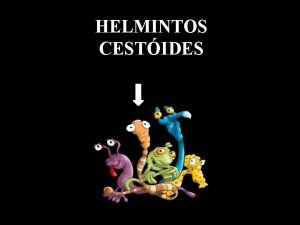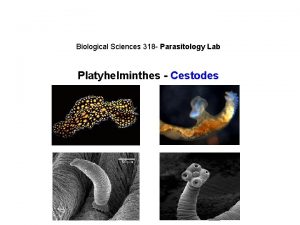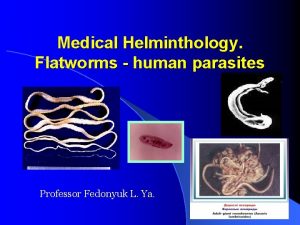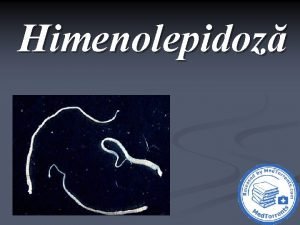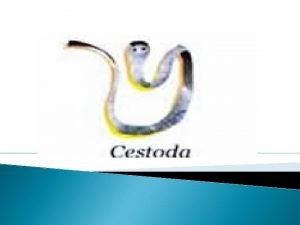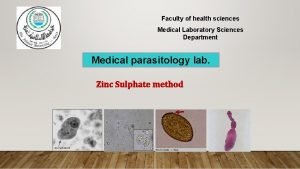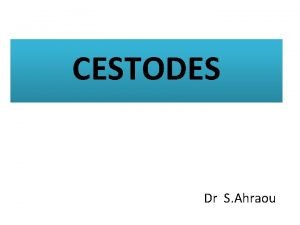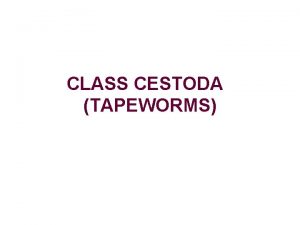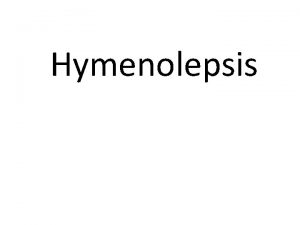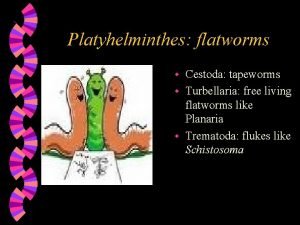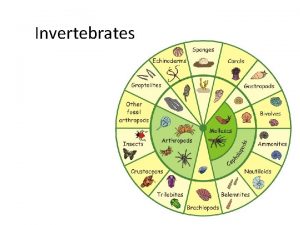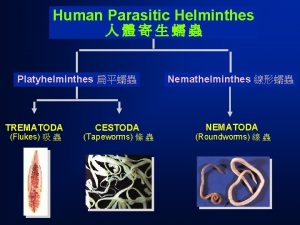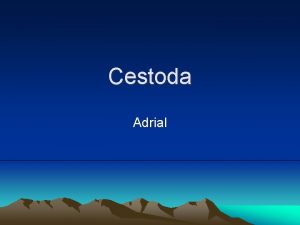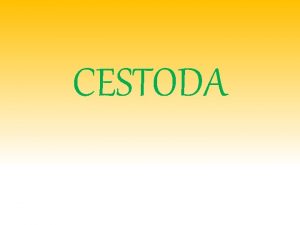Cestoda tapeworms Hymenolepis diminuta Hymenolepis nana General characters













- Slides: 13

Cestoda tapeworms • Hymenolepis diminuta • Hymenolepis nana

General characters of cestodes • Flattened dorsoventrally - bilaterally symmetrical. • Adults are provided with strong muscular suckers that are organs of fixation. • Worms varied in length from few mm to few meters. • Body segmented, scolex, immature , mature and gravid segments. • Hermaphrodite • *Man may be a final host (harbor adults in intestine ) or an intermediate host (harbor larval stages in tissues). As a final host As intermediate host -Hymenolepis -Cysticercosis -Taenia -Hydatid

Hymenolepis nana & diminuta • • Phylum: Platyhelminthes Class: Cestoidea Subclass: Cestoda Order: Cyclophyllidea Family: Hymenolepididae Genus: Hymenolepis Species: Hymenolepis nana Scientific name Hymenolepis nana • • Phylum: Platyhelminthes Class: Cestoidea Subclass: Cestoda Order: Cyclophyllidea Family: Hymenolepididae Genus: Hymenolepis Species: H. diminuta Scientific name Hymenolepis diminuta

• Disease: Hymenolepiasis nana • Geographical distribution: Worldwide Common in children in areas of poor sanitation. • Morphology: Adult: *Smallest tapeworm (1 - 3 cm. ). Larva "Cysticercoid":

Life Cycle: Habitat: Adults live in the SMALL INTESTINE of MAN. Definitive host: MAN. Intermediate hosts: Man. Infective stage: Mature Egg. Mode of infection: Orally by: - Ingestion of egg contaminating food or drink. - Autoinfection by contaminated hands (hand to mouth). • Diagnostic stage: Egg. • Pathogenic stage: Adult & Larva • • •


Pathogenesis and clinical picture: • • • Adult attached to the small intestine is deeply embed in between villi. Larvae 'Cysticercoid' develop in submucosa of the small intestine. Clinical picture: Mild infection is usually Asymptomatic. Severe infection is Symptomatic. @ Colic @ Anorexia @ Vomiting @ Diarrhoea @ Insomnia

Diagnosis and treatment Detection of Eggs in stool. Treatment: *Praziquantel 25 mg/k single dose. *Niclosamide. *Members of family or group must be treated at the same time. • Prevention & Control: • • • – Mass treatment – Avoid use of human fertilizers. – Health education & personal cleanliness. – Proper washing of vegetables & pure water supply.

Morphology • Length: 20 -60 cm • Scolex: 4 suckers- rostellum- no hooks • Mature and gravid segments: Similar to H. nana but larger (4 x 0. 8 mm)

Life Cycle

Adult H. diminuta Egg of H. diminuta

Prevention and Control • Rodent control

“Thank you for listening” Presented by Kim, Woosoo
